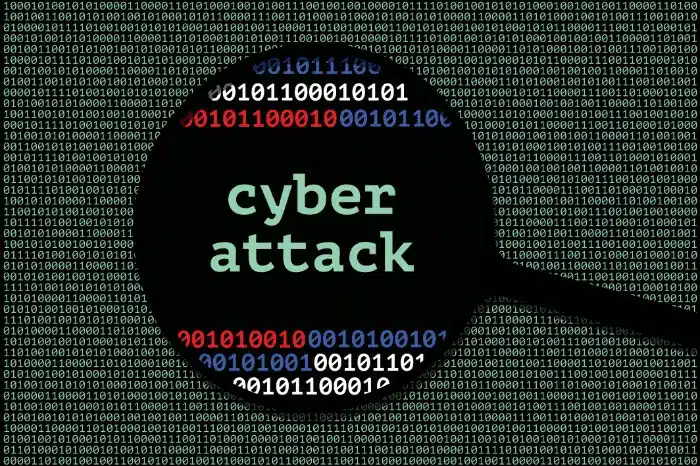
What exactly is a cyber-attack? Cyber-attacks involve malicious actors using technology to gain unauthorized access to an organization’s or individual’s systems, networks, or data to steal confidential information or disrupt operations. While some of these attacks may seem harmless at first glance, they can cause significant damage if left unchecked, especially for a warehouse or 3PL.
Individuals and organizations alike need to understand the various types of cyber-attacks so that they can take steps to protect their systems from such threats. In this article, we will explain the different types of threats your warehouse could face, the data and equipment at risk, and how to prevent cyber attacks.
A Cyber Attack Can Come From Many Sources
External and internal threats to your warehouse’s operations take many forms when it comes to attacks by cybercriminals. Security breaches are not just limited to those that run when a virus or malware is downloaded by accident either. Be on the lookout for the following entry points that could compromise your operating systems and data.
1. Phishing: Phishing is the practice of sending emails under false pretenses in an attempt to get sensitive financial or personal information from recipients. These emails may even look to be official correspondence from a customer or supplier. If the cybercrime is successful, it could result in identity theft, expose company financials, and allow access to key customer information.
2. Ransomware: Ransomware is malicious software that can be used to hack into a company’s network system, control access to the system, encrypt a user’s data or a warehouse’s entire system and then demand money for its release. Who can forget when ransomware shut down the Colonial Pipeline in 2021, demanding payment of roughly $5 million for release? This type of cyber-attack can take down a company of any size or type.
3. Malware: Malware is malicious code or software that can be installed on a user’s computer to access, steal, and delete their data. Commonly called a virus, this data breach can be introduced to one computer and expose an internal network by simply clicking on an online link, downloading a file, staff installing a program, or inserting a USB drive.
4. Distributed Denial of Service (DDoS): A DDoS attack occurs when malicious hackers use multiple computers to send large volumes of requests to overwhelm the target server making it unable to cope with the load, possibly taking it down. This happened in 2022 with the Ticketmaster site during the presale of Taylor Swift concert tickets enraging many fans that couldn’t purchase tickets. A 3PL or warehouse is easily just as vulnerable given the integration with eCommerce sites.
5. Remote Control System Access: Remote control cyber-attacks happen when an individual unknowingly allows cyber criminals from an outside entity to gain access to their computer to fix an issue.
The hackers will often communicate while pretending they are from a software company, commonly used website, or bank noting that your account has been compromised.
Once receiving your password, they can then help themselves to whatever they want including warehouse bank accounts, sensitive information, or simply upload destructive code leading to headaches and possible legal consequences.
Warehouse management can prevent cyber attacks by being proactive in implementing the right tools and strategies to protect your information, systems, and data from unauthorized access and malicious intent.
Cyber-Physical Systems are at Risk for Cyber Attacks

You have probably heard of IT – Information Technology and OT – Operational Technology. In the past, IT and OT were separate technologies that did not integrate and IT was the only system susceptible to data breaches. With the age of automated equipment, that is no longer the case as automated systems use both forms, thus the cyber-physical system. This presents cyber risks to equipment that never could be compromised by an outside security threat before.
In a 2020 Gartner article, Katell Theilemann, a VP Analyst at Gartner warned “Due to their very nature, cyber-physical systems face security threats unlike those affecting enterprise IT systems. They are typically used in operations or mission-critical environments where value is created for organizations, so attackers are increasingly targeting them.”
It is no longer an option to just protect your sensitive information, warehouses and 3PLs must also ensure that their connected equipment is protected against cybercrime.
How to Prevent Cyber Security Attacks at Your Warehouse

These are just some of the measures that can be taken to help protect your 3PL or warehouse against cyber-attacks, but it is important to bear in mind that no one system or strategy will keep your data completely safe from all attacks. Cybercrime is becoming increasingly sophisticated so businesses need to remain alert and take steps to ensure they take preventative measures against potential threats.
By staying informed, implementing appropriate security protocols, monitoring networks for suspicious activity, and regularly training staff on digital safety best practices, you can make sure your business is better prepared to prevent attacks. With the right tools and strategies in place, you can ensure your data and equipment remain secure and protected from malicious intent.
Consider:
- Installing anti-virus software. Be sure to update the software often.
- Train appropriate staff on cyber security and put specific company policies into place. A policy example would require two-factor authentication, restrictions on installing software, and strong passwords that are changed regularly.
- Always, always, ALWAYS make software and system updates a priority! This is critical for both business and personal devices that access company software – even mobile devices.
- Backing up your data. This is an extremely important step to take in protecting yourself against cyber attacks. By regularly backing up your data, you can make sure that any lost or stolen information can be recovered quickly and easily, minimizing disruptions in operations.
- Hiring an ethical and professional hacker. They can bring any software vulnerabilities to light before any potential cyber-attacks through penetration testing.
- Getting outside help. If your 3PL or warehouse doesn’t have the time or labor available to focus on a robust security solution, hire a professional in cyber security to develop a plan. Remember, if a breach occurs the business impact could be enormous. You have to follow the plan to prevent cyber attacks and stop data breaches.
Overall, cybercrime is an ever-present threat that businesses must be aware of and prepared for. Taking the right steps to protect yourself and your organization from cyber threats should be seen as an essential part of doing business in today’s supply chain.
Develop a Disaster Recovery Plan to Prevent Cyber Attacks

As cyber-attacks continue to evolve, warehouses and 3PLs must stay vigilant and adapt their security systems and measures accordingly. Having a solid plan in place should someone gain access to your sensitive data or systems, is essential for business continuity. This means having a cyber security strategy for restoring data quickly and efficiently in the event of an attack or system outage.
This should include backup protocols that allow you to restore any lost information as quickly as possible, as well as measures aimed at limiting the damage caused by the breach. Additionally, it should outline procedures for informing staff and customers about the incident and implementing corrective actions.
Lessons Learned From When Your Company Has Been Hacked

In November 2022, newly appointed SolarWinds CEO Sudhakar Ramakrishna was faced with one of the world’s most sophisticated cyber-attack to date. The criminals chose to access the IT solutions provider’s clients which included US federal agencies and a large percentage of Fortune 500 companies.
He offered advice to company owners and management when addressing the crisis: be transparent, be urgent, collaborate, communicate, and be humble. The company is still recovering two years later. Read the Raconteur article on how he dealt with a horrible crisis.
WMS and Our Commitment to Security

The Logimax team is dedicated to working closely with clients on warehouse management system (WMS) software needs, as well as making sure that each has implemented the proper ways to protect their information and equipment. Want to learn more? Contact us today for more information.
Check out Parts 1 and 2 in our Warehouse Security Series for more information on keeping your warehouse, employees, and inventory safe from internal and external threats.



